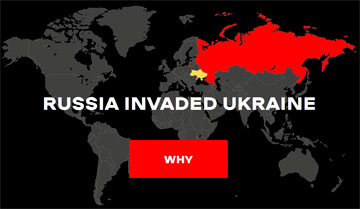Slackware Linux update for openvpn
| Risk | High |
| Patch available | YES |
| Number of vulnerabilities | 5 |
| CVE-ID | CVE-2017-7508 CVE-2017-7520 CVE-2017-7521 CVE-2017-7512 CVE-2017-7522 |
| CWE-ID | CWE-617 CWE-200 CWE-415 CWE-401 CWE-20 |
| Exploitation vector | Network |
| Public exploit | N/A |
| Vulnerable software |
Slackware Linux Operating systems & Components / Operating system Other |
| Vendor |
Slackware |
Security Bulletin
This security bulletin contains information about 5 vulnerabilities.
1) Improper input validation
EUVDB-ID: #VU7144
Risk: Medium
CVSSv4.0: 6.6 [CVSS:4.0/AV:N/AC:L/AT:N/PR:N/UI:N/VC:N/VI:N/VA:H/SC:N/SI:N/SA:N/E:U/U:Green]
CVE-ID: CVE-2017-7508
CWE-ID:
CWE-617 - Reachable Assertion
Exploit availability: No
DescriptionThe vulnerability allows a remote attacker to perform a denial of service (DoS) attack.
The vulnerability exists due assertion failure when processing IPv6 packets. A remote attacker can send a specially crafted IPv6 packet and perform a denial of service (DoS) attack.
Mitigation
Update the affected package to version 2.3.17 or 2.4.3.
Vulnerable software versionsSlackware Linux: 13.0 - 14.2
:
CPE2.3- cpe:2.3:o:slackware:slackware_linux:13.0:*:*:*:*:*:*:*
- cpe:2.3:o:slackware:slackware_linux:13.1:*:*:*:*:*:*:*
- cpe:2.3:o:slackware:slackware_linux:13.37:*:*:*:*:*:*:*
- cpe:2.3:::::*:*:*:*:*:*:*
Q & A
Can this vulnerability be exploited remotely?
Yes. This vulnerability can be exploited by a remote non-authenticated attacker via the Internet.
Is there known malware, which exploits this vulnerability?
No. We are not aware of malware exploiting this vulnerability.
2) MitM attack
EUVDB-ID: #VU7165
Risk: Low
CVSSv4.0: 1 [CVSS:4.0/AV:L/AC:L/AT:N/PR:N/UI:A/VC:L/VI:N/VA:L/SC:N/SI:N/SA:N/E:U/U:Clear]
CVE-ID: CVE-2017-7520
CWE-ID:
CWE-200 - Exposure of sensitive information to an unauthorized actor
Exploit availability: No
DescriptionThe vulnerability allows a remote attacker to perform a denial of service (DoS) attack or obtain potentially sensitive client's information.
If clients use a HTTP proxy with NTLM authentication (i.e. "--http-proxy <server> <port> [<authfile>|'auto'|'auto-nct'] ntlm2"), a man-in-the-middle attacker between the client and the proxy can cause the client to crash or disclose at most 96 bytes of stack memory. The disclosed stack memory is likely to contain the proxy password.
Mitigation
Update the affected package to version 2.3.17 or 2.4.3.
Vulnerable software versionsSlackware Linux: 13.0 - 14.2
:
CPE2.3- cpe:2.3:o:slackware:slackware_linux:13.0:*:*:*:*:*:*:*
- cpe:2.3:o:slackware:slackware_linux:13.1:*:*:*:*:*:*:*
- cpe:2.3:o:slackware:slackware_linux:13.37:*:*:*:*:*:*:*
- cpe:2.3:::::*:*:*:*:*:*:*
Q & A
Can this vulnerability be exploited remotely?
Yes. This vulnerability can be exploited by a remote non-authenticated attacker via the Internet.
Is there known malware, which exploits this vulnerability?
No. We are not aware of malware exploiting this vulnerability.
3) Double free error
EUVDB-ID: #VU7143
Risk: High
CVSSv4.0: 8.1 [CVSS:4.0/AV:N/AC:L/AT:N/PR:N/UI:N/VC:H/VI:H/VA:H/SC:N/SI:N/SA:N/E:U/U:Amber]
CVE-ID: CVE-2017-7521
CWE-ID:
CWE-415 - Double Free
Exploit availability: No
DescriptionThe vulnerability allows a remote attacker to compromise vulnerable system.
The vulnerability exists due to double free error when processing --x509-alt-username attribute. A remote unauthenticated attacker can trigger double free error and crash the affected server or potentially execute arbitrary code.
Successful exploitation of the vulnerability may allow an attacker to compromise vulnerable system.
MitigationUpdate the affected package to version 2.3.17 or 2.4.3.
Vulnerable software versionsSlackware Linux: 13.0 - 14.2
:
CPE2.3- cpe:2.3:o:slackware:slackware_linux:13.0:*:*:*:*:*:*:*
- cpe:2.3:o:slackware:slackware_linux:13.1:*:*:*:*:*:*:*
- cpe:2.3:o:slackware:slackware_linux:13.37:*:*:*:*:*:*:*
- cpe:2.3:::::*:*:*:*:*:*:*
Q & A
Can this vulnerability be exploited remotely?
Yes. This vulnerability can be exploited by a remote non-authenticated attacker via the Internet.
Is there known malware, which exploits this vulnerability?
No. We are not aware of malware exploiting this vulnerability.
4) Memory leak
EUVDB-ID: #VU7142
Risk: Medium
CVSSv4.0: 2.7 [CVSS:4.0/AV:N/AC:L/AT:N/PR:N/UI:N/VC:L/VI:N/VA:N/SC:N/SI:N/SA:N/E:U/U:Green]
CVE-ID: CVE-2017-7512
CWE-ID:
CWE-401 - Missing release of memory after effective lifetime
Exploit availability: No
DescriptionThe vulnerability allows a remote attacker to gain access to potentially sensitive information.
The vulnerability exists due to multiple errors. A remote attacker can trigger memory leak and gain unauthorized access to potentially sensitive information.
MitigationUpdate the affected package to version 2.3.17 or 2.4.3.
Vulnerable software versionsSlackware Linux: 13.0 - 14.2
:
CPE2.3- cpe:2.3:o:slackware:slackware_linux:13.0:*:*:*:*:*:*:*
- cpe:2.3:o:slackware:slackware_linux:13.1:*:*:*:*:*:*:*
- cpe:2.3:o:slackware:slackware_linux:13.37:*:*:*:*:*:*:*
- cpe:2.3:::::*:*:*:*:*:*:*
Q & A
Can this vulnerability be exploited remotely?
Yes. This vulnerability can be exploited by a remote non-authenticated attacker via the Internet.
Is there known malware, which exploits this vulnerability?
No. We are not aware of malware exploiting this vulnerability.
5) Improper input validation
EUVDB-ID: #VU7141
Risk: Low
CVSSv4.0: 1.3 [CVSS:4.0/AV:N/AC:L/AT:N/PR:L/UI:N/VC:N/VI:N/VA:L/SC:N/SI:N/SA:N/E:U/U:Clear]
CVE-ID: CVE-2017-7522
CWE-ID:
CWE-20 - Improper input validation
Exploit availability: No
DescriptionThe vulnerability allows a remote attacker to perform a denial of service (DoS) attack.
The vulnerability exists due to an error when processing --x509-track attribute within mbedtls. A remote authenticated attacker can perform denial of service (DoS) attack.
MitigationUpdate the affected package to version 2.3.17 or 2.4.3.
Vulnerable software versionsSlackware Linux: 13.0 - 14.2
:
CPE2.3- cpe:2.3:o:slackware:slackware_linux:13.0:*:*:*:*:*:*:*
- cpe:2.3:o:slackware:slackware_linux:13.1:*:*:*:*:*:*:*
- cpe:2.3:o:slackware:slackware_linux:13.37:*:*:*:*:*:*:*
- cpe:2.3:::::*:*:*:*:*:*:*
Q & A
Can this vulnerability be exploited remotely?
Yes. This vulnerability can be exploited by a remote authenticated user via the Internet.
Is there known malware, which exploits this vulnerability?
No. We are not aware of malware exploiting this vulnerability.
